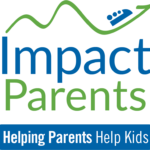
Guiding parents and teachers to navigate the challenges of Anxiety
Anxiety is thought to be the most common mental health or neurodevelopmental condition worldwide. Even outside of a global pandemic and other stress-inducing aspects of societal upheaval, the pace and expectations of modern society seem to be causing a steady rise in symptoms of anxiety across the globe. Parents are worried, teachers are stressed, and their students are getting increasingly more anxious. Anxiety can significantly (cont'd below)
Filter by Focus Area
Leading Articles about Managing Anxiety
Taming Your Inner Control Freak!
When life gets crazy in ADHD families, the natural tendency for some of us is to jump in and “take…
CONTINUEDCombat Your Anxiety and ADHD
Practice 20 Seconds of Bravery I saw in a movie that you only need “20 seconds of true bravery” to…
CONTINUED4 Step Process to Manage Meltdowns & Deescalate Tantrums
What can you do to manage meltdowns and de-escalate triggers? Elaine:So emotional management shows up in a lot of different…
CONTINUEDFour Ways to Teach Your Kid to Stand Up to Bullying
Bullying is a familiar topic in the world of complex kids, and internationally renowned parent author and educator, Barbara Coloroso,…
CONTINUEDDid Social Anxiety Make Me a Leader?
I was 56 years old before I began to suspect that social anxiety played a big part in making me…
CONTINUEDUsing Time Effectively When There’s Really No Time to Spare
Using time effectively is so hard to do these days. In my house, we are living life at a warp-speed-wonderful…
CONTINUEDParenting Through Denial
Getting out of the muddy river of parenting denial is the first step to feeling successful when raising children –…
CONTINUEDGEMO (Good Enough, Move On!)
The Problem With Perfection What a funny word, GEMO (/GEE-Moh/). It sounds like a cartoon character. Actually, it’s an acronym…
CONTINUEDGet Clear About How You Feel About Change
Some people are all about change. They are all about self-improvement and personal development. Their end tables are filled with…
CONTINUED(continued) impair a student’s availability to learning; its close companion, stress, can reduce the effectiveness of an adult’s communication. According to the National Institutes of Health (NIH), nearly 1 in 3 of all adolescents ages 13 to 18 will experience an anxiety disorder; the Anxiety and Depression Association of America puts the number for adults at 1 in 5.
Many strategies are offered to help children, teens and adults manage the symptoms of anxiety, including: medications, stress management training, meditation and mindfulness practices, cognitive behavior therapy (CBT), some forms of coaching, sleep hygiene, and breathing techniques. New and promising CBD research is revealing potential options for support in addition to commonly prescribed medications. As with ADHD and many other conditions impacting children, when parents receive behavior management training, they are better able to create an environment that can effectively support their children and teens with anxiety.
Symptoms of anxiety vary. On one end of the spectrum, generalized anxiety disorder (GAD) is reflected in more than 3% of the population who tend to feel anxious most days and struggle to remember when they felt relaxed. Social anxiety is another form of anxiety that occurs specifically in certain social dynamics.
On the other end of the spectrum, anxiety is a symptom of other mental health conditions such as panic disorders, post traumatic stress disorder, phobias, or obsessive compulsive disorder (OCD). Anxiety also commonly coexists in children and teens with other health and learning conditions such as ADHD, learning disabilities, autism and depression. Again, according to the NIH, between 2007 and 2012, anxiety disorders in children and teens went up 20%.









